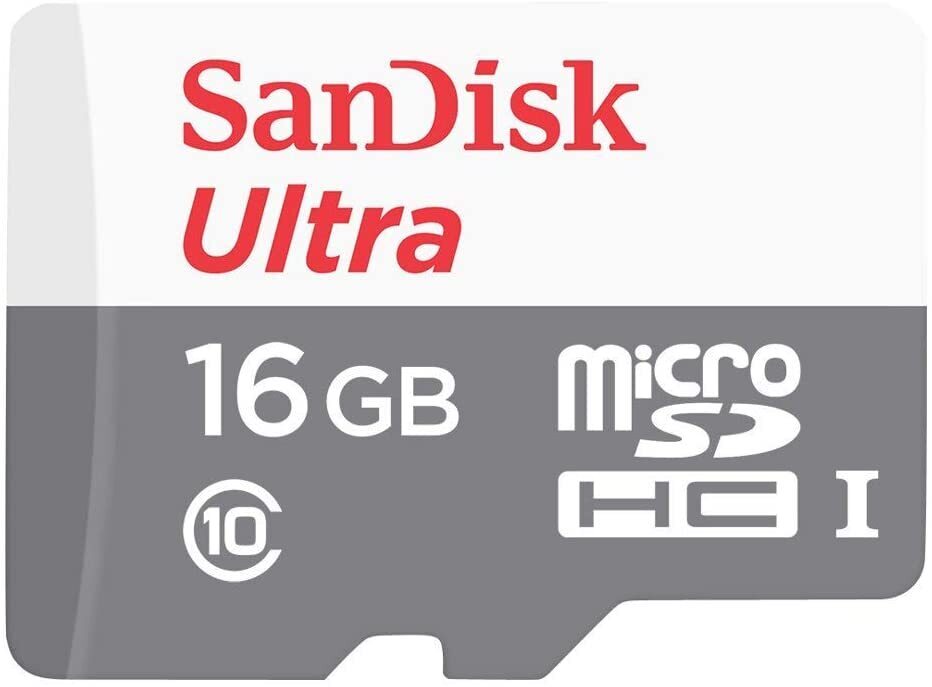Mastering Speed Classes for SD and microSD Cards
By: Linda On: 31 October 2024

Picking the right memory card can really improve your device experience. Whether you're capturing amazing 4K videos or storing tons of data, knowing the different speed classes for SD and microSD cards is super important. This guide breaks down the essentials, benefits, and real-life uses of speed classes so you can make smart choices.

What is Speed Class?
Speed Class is a standard created by the SD Association to measure the minimum sustained write speeds of memory cards. This ensures that memory cards perform consistently and efficiently in various recording scenarios. There are three main types of speed classes:
- Speed Class (C-Class)
- UHS Speed Class (U-Class)
- Video Speed Class (V-Class)
These classifications help consumers select the appropriate memory card for their devices based on speed requirements.
Why Speed Class Matters
The speed class of your memory card directly affects its performance on different devices. A slower speed class may cause issues such as slow transfer speeds, dropped frames in videos, and even device crashes, causing you to lose progress on games or even your work. A higher speed class may improve these aspects and enhance your device user experience.
Speed Class Breakdown
C-Class
C-Class is the basic speed class for SD cards, ranging from C2 to C10. The number indicates the minimum sustained write speeds in megabytes per second (MB/s). For example, a C10 card has a minimum sustained write speed of 10 MB/s. This speed class is suitable for basic photo and video recording and storing documents and music files.
U-Class
UHS Speed Class (U-Class) is the next level of speed classes, designed for higher resolution video recording and faster data transfer speeds. It has two sub-categories: U1 and U3. A U1 card has a minimum sustained write speed of 10 MB/s, while a U3 card can sustain a minimum write speed of 30 MB/s. These cards are perfect for capturing high-quality photos and videos in burst mode or recording in 4K resolution.
V-Class
Video Speed Class (V-Class) is specifically designed for professional video recording, providing minimum sustained write speeds of 60 MB/s to 150 MB/s. These cards are essential for capturing high-quality videos in 8K and above resolutions and for continuous shooting at high frame rates.
Choosing the Right Speed Class
Consider your device's requirements and intended use when selecting a memory card. A C-Class card may suffice if you use your memory card primarily for basic tasks such as storing documents or music files.
However, if you plan on using your card for more demanding tasks such as 4K video recording or continuous high-speed photography, investing in a U- or V-Class card will ensure optimal performance and prevent data loss.
Also, check your device's specifications to see which speed class it supports. Using a lower-speed class card than recommended for your device may result in slower transfer speeds and potential data corruption.
Other Factors to Consider
Aside from the speed class, there are other factors to consider when choosing a memory card:
Storage Capacity
Memory cards come in various storage capacities, ranging from a few gigabytes (GB) to several terabytes (TB). When selecting a card, consider how much storage space you will need for your files. Keep in mind that higher-capacity cards are often more expensive.
Durability and Reliability
If you plan on taking your memory card with you on outdoor adventures or using it in extreme weather conditions, choose one with a high durability rating. Look for waterproof, shockproof cards that are resistant to extreme temperatures to withstand any environment.
Additionally, check the manufacturer's reliability ratings and read reviews from trusted sources before purchasing. A reliable memory card is essential for storing important data without the risk of losing it.
Compatibility
Not all memory cards are compatible with every device. Before purchasing, check your device's specifications and the card's compatibility list. Some devices may also require a specific type or size of memory card, so do your research beforehand to avoid compatibility issues.
The right memory card makes it easy to store and transfer valuable data. Whether for personal or professional use, a high-quality memory card will ensure your files are safe and easily accessible.
Additional Tips
- Consider purchasing multiple cards of smaller capacities instead of one large-capacity card to prevent losing all your data if one card fails.
- Avoid buying used or refurbished memory cards, as they may have hidden defects that could lead to data loss.
- Keep your memory card clean and avoid exposing it to extreme temperatures or moisture, which can damage the card and cause data loss.
- For added security, regularly back up your data from your memory card to a computer or another storage device. Remember, any electronic device can fail, so it's always best to have multiple backups of important data.
Choosing the Right Brand
There are numerous brands of memory cards available on the market. It can be overwhelming to decide which brand to go with, but it's important to research and read reviews before deciding. Here are some well-known and reputable brands to consider:
- SanDisk: Known for its reliability and wide range of options for different needs, SanDisk has a strong reputation in the market.
- Samsung: Offers high-speed performance and durability, making it a favourite among tech enthusiasts.
- Lexar: provides quality memory cards that balance speed and price well and suit amateurs and professionals.
- Kingston: Highly recommended for its exceptional quality and performance. Kingston memory cards undergo rigorous testing and quality control measures, ensuring top-notch reliability and durability. Perfect for anyone seeking the best in memory card technology.
Be cautious of lesser-known or off-brand options as they may not have undergone rigorous testing and quality control measures.
Benefits of Higher Speed Classes
While higher-speed classes may cost a bit more, they offer significant benefits for those working with large, high-quality media files. Faster transfer speeds mean less time waiting for files to save or load, making it easier and quicker to complete projects.
Additionally, UHS Speed Class ratings can improve overall device performance when using the memory card as an extension of internal storage. Opting for higher-speed classes offers several advantages:
- Enhanced Performance: Faster write speeds result in smoother video recording and quicker file transfers.
- Future-Proofing: Higher-rated cards are compatible with newer devices and technologies.
- Versatility: Suitable for various applications, from photography to VR content creation.
Real-World Examples
Example 1: Professional Photographer
Jane, a professional photographer, uses a high-end DSLR camera for her shoots. She opts for a U3-rated SD card with a UHS-II bus interface to ensure fast write speeds and quick file transfers. This allows her to capture high-resolution images without any lag.
Example 2: Drone Enthusiast
Tom, a drone enthusiast, records 4K videos during his flights. He uses a V60-rated microSD card to ensure smooth and uninterrupted video recording, which enhances his overall experience and ensures high-quality footage.
Example 3: Casual User
Emily, a casual user, mainly uses her smartphone for everyday photography and video recording. She selects a C10-rated microSD card, which provides sufficient speed for her needs while being cost-effective.
Conclusion
Understanding speed classes for SD and microSD cards are essential for optimising device performance and ensuring data integrity. By selecting the right speed class, you can enhance your overall experience.


